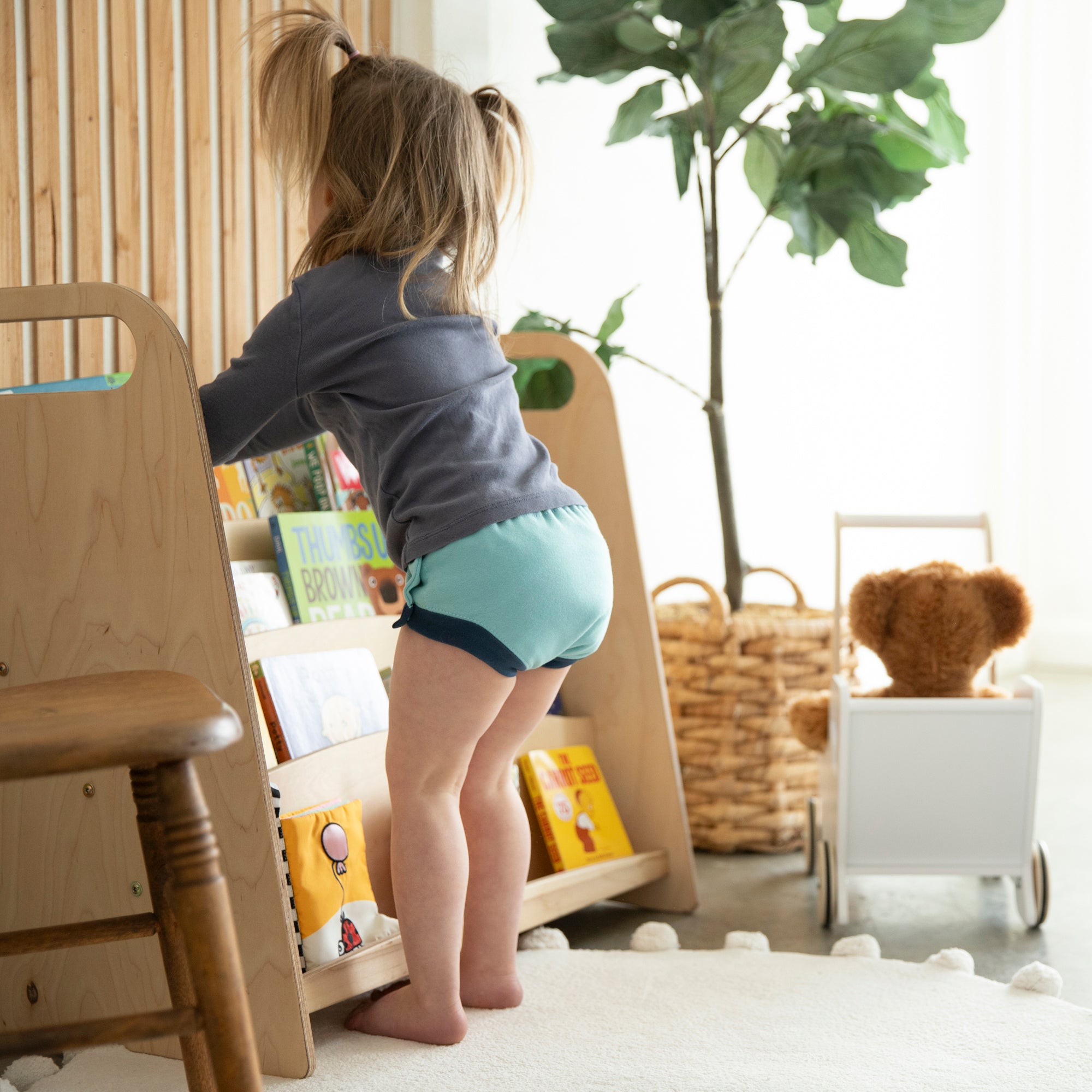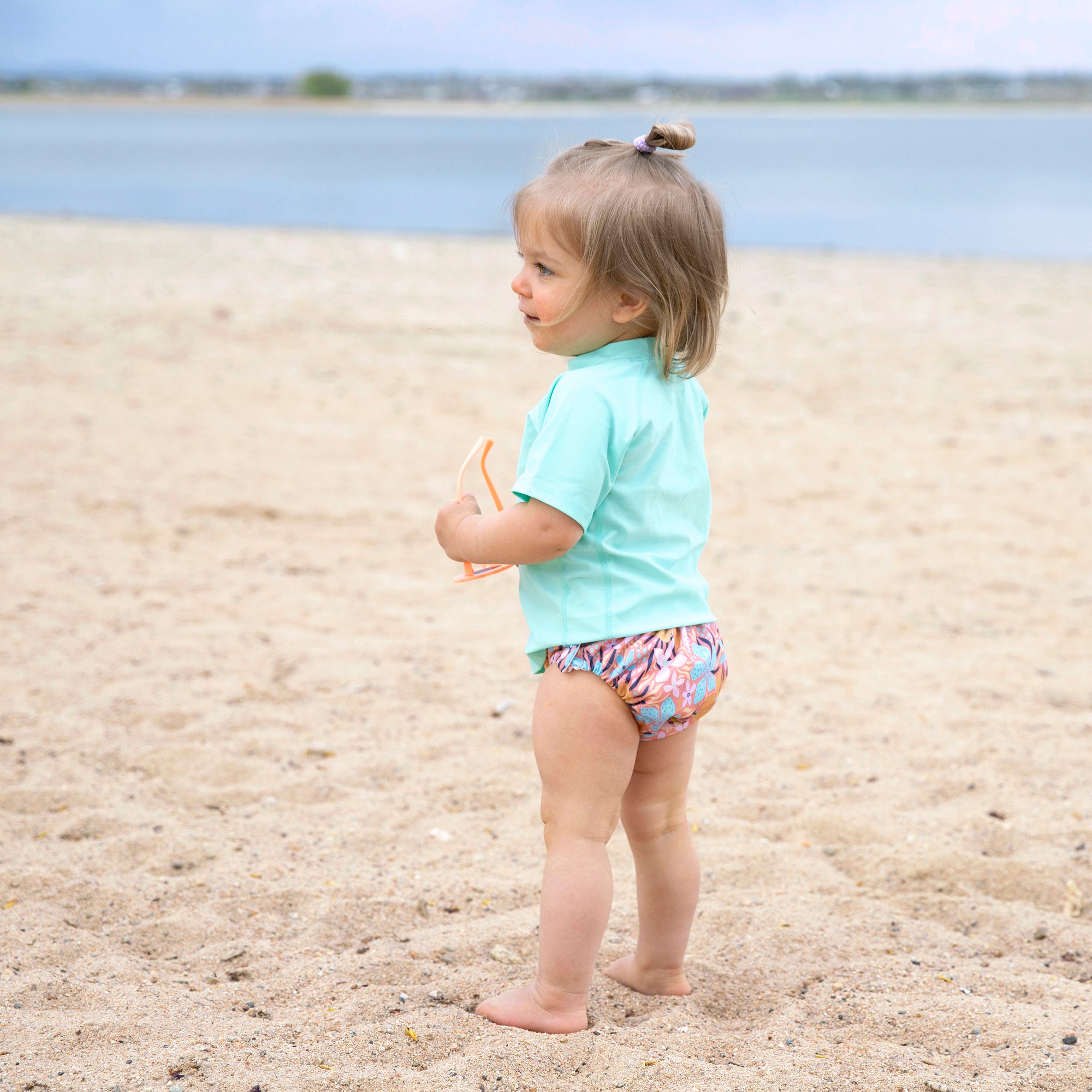Growing up in the seventies and eighties, disposable diapers were something that I took for granted. In the late 1940s crude paper disposables first made an appearance and in 1961 a major brand of disposable diapers was launched. Disposable diapers were originally made of paper pulp with a thin plastic covering. Over the past 50 years, disposable diapers have changed and evolved into what is currently on the market today. But what exactly is in these diapers? I was surprised when I found out.
Have you ever wondered what makes modern disposable diapers so super-absorbent? It's a chemical compound called Sodium Polyacrylate. This compound binds to liquids and can hold 200 to 300 times its weight, turning from a powdery substance into a gooey gel. It is also used in some potting soils to help the soil retain water. If you've ever changed a diaper and found small gel balls on your child's skin, it is most likely the Sodium Polyacrylate crystals. Have you ever seen a child who has gone swimming in one of these? It almost look like the child is holding a balloon between his or her legs and the diaper looks ready to burst. Sodium Polyacrylate crystals were once used in tampons until they were later removed due to their relation to Toxic Shock Syndrome.
The bleaching process also leaves many chemicals behind in the fibers of disposable diapers. Chlorine bleach leaves behind toxins called "dioxins.” Dioxins can cause problems in the endocrine systems (hormones) and are also carcinogens. Dioxins are found in many brands of disposable diapers and prolonged exposure to these dioxins may be related to infertility later in life. Certain cloth diapers may also contain trace levels of dioxins due to the bleach used to treat the fibers in the cloth, however these dioxins are washed out during the one to two pre-washes suggested before the baby ever wears the diapers. Babies wearing disposable diapers are exposed to these dioxins up to 24 hours a day.
Disposable diapers also contain chemicals and compounds that act as respiratory irritants that can cause asthma and asthma-like symptoms. These are toluene, xylene, ethylbenzene, styrene and isoproplybenzene. The rise of asthma rates and the introduction of certain chemicals and scents into diapers appear to be linked. Cloth diapers do not out-gas any of these chemicals. What's more, some diapers also use special dyes that change color to indicate that the diaper is wet and of course, plastics and adhesives are used to make the diaper tabs.
So are disposable diapers unsafe to use? Obviously many families use them and have no immediate problems--or at least none that they would think to link to the diapers they are using. The most serious health concerns linked to using disposable diapers don't occur until later in life--such as childhood asthma and male infertility. As for me, my baby is wearing cloth diapers and I'm glad I don't need to wonder what sort chemicals they are out-gassing or if he is absorbing carcinogenic dioxins through his tush. I feel good about that.
*This post originally posted on our blog on May 9, 2011.
OUR BESTSELLERS
Parent Tested, Baby Approved





I’m not 100% sure that disposables are bad for the average healthy baby but all the chemicals and such that are required to manufacture them can’t be good for the environment! Add to that the burden on the landfills and cloth really seems like a better choice for over all human health. PS, I agree with the other poster that commented on the smell. Most brands don’t bother me but Pampers has this perfume in it that just smells NASTY!!
The dog died because it ingested the dry gel powder, which then swelled in it’s stomach, causing an impaction, or rupturing the stomach. Swallowing a cloth diaper would have had the same effect. If either were removed in time by surgery, the dog would have lived.
Polyacrylamide gel is non toxic. In fact, it’s used as a rehydrated gel to ‘water’ insects like crickets (that have a nasty habit of falling into water bowls and drowning). They eat the stuff. In fact there are versions with nutrients added that they are fed as food & water in one. The crickets & insects are then used to feed pet reptiles (I’ve been using the stuff for years for my animals, no problem). If it were harmful to feeder insect or reptile, it would not be used.
So as long as you’re not feeding the powder to something or someone, there’s no problem. Even then, it’s not the chemical that’s toxic, it’s the swelling that’s harmful. (This is essentially the same problem with the brightly colored ‘water balls’ that were recalled).
I read a story about a family who cloth diapered and were stripping all the diapers, so had disposables for the day or two they stripped. Their dog tore into a disposable, ingested the gel inside, and ended up dying. I know dogs that rip into cloth diapers too… at least those won’t kill the animal! Obviously the ideal scenario would involve the dog NOT eating a diaper… but things happen. If it is that dangerous, I don’t want those chemicals near my child…. and what if my CHILD decided to tear into one somehow?! Yeah, totally sticking with my cloth.
Thanks for the information. I’ve been pretty happy since we moved to CD in the day time. Still us the disposables at night since our little guy sleeps almost 12 hours in a night.
Disposables have given my kids rashes non stop! Love my cloth and my AIO!
You're viewing 6-10 of 20 comments